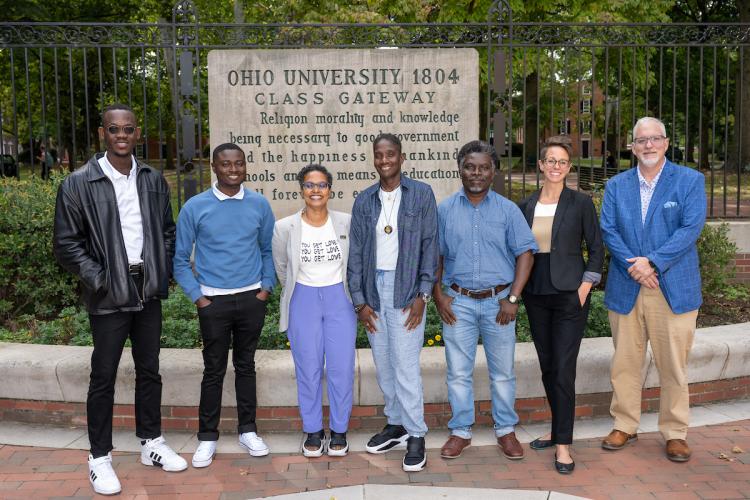
Measuring social impact: OHIO expands enterprise through Social Return on Investment

Imagine you’re the founder of a company whose mission is to make the world a better place. To attract investors, measure outcomes, and determine those outcomes’ monetary value, you might reach for a burgeoning framework — Social Return on Investment, or SROI.
Similar to a cost-benefit analysis, SROI results in a ratio that can be used to illustrate an organization’s approach to achieving the triple bottom line (people, planet, profit) and its value to the community.
Allison Ricket, a visiting professor and executive in residence in the Voinovich School of Leadership and Public Service, co-leads a team that conducts SROI research on behalf of companies in the local region and beyond. Recognizing a need to convey that research to a lay audience, Ricket reached out to Eric R. Williams, a professor of new media storytelling and director of the Master of Fine Arts (MFA) in Communication Media Arts program in the Scripps College of Communication. They enlisted three MFA students to help translate Ricket’s social enterprise research for marketing and communication purposes. We wanted to know more about the SROI concept, and about how the partnership benefitted everyone involved. So we asked some clarifying questions.
Can you describe how this kind of research works in practice?
Ricket: I co-lead a research team at the Voinovich School that specializes in impact measurement and management, and the specific methodology called Social Return on Investment (SROI). We do sponsored research, which means people pay us to do research for their organizations. One of our clients is a Columbus-based organization called Fit to Navigate. Fit to Navigate is what we call a social enterprise, a private business with a social mission. The two founders created a business that works with marginalized populations and justice involved women, helping them to become nationally certified personal trainers. They are currently seeking impact investment for expansion of their business, and we conducted an analysis that measured the social impact the organization has made.
Is that where your partnership with the MFA program came in?
Ricket: Yes. Over the summer, Professor Eric Williams worked with me to place three of his students with my SROI Impact team. By helping us translate our research into marketing and communication materials that our clients can use, the students helped us fill a huge capacity gap. They worked directly with clients both local and in the greater Columbus area, and the results of our cross-University collaboration were amazing! For me, the collaboration is about how to communicate complex research more clearly, so clients can use the research for marketing, policy conversations and advocacy, strengthening their value proposition for funders.
What are some factors that contributed to the partnership’s success?
Williams: Because the students (Tony Acheampong, K.K. Edonu and Jeffrey Agyekum) were all coming into this project from a background where they have spent years working with clients already (the MFA program is designed for mid-career professionals), they were able to function at a much higher level and more quickly, albeit with newly acquired media skills.
It’s like we have found a “sweet spot” between education, experience, and practice. We can take advantage of that by applying this magic potion to really important, socially relevant projects that have a critical need to illustrate a complex matrix of information and outcomes to the public.
This one’s for the students: What was the impact of this experience for you?
Agyekum: The fusion of figures, data charts, words and visuals on this project has not only expanded my creative horizons but also deepened my understanding of infographic storytelling and communication, thus adding to my unforgettable MFA educational experience.
Edonu: I am glad to have shared my expertise in infographics to help the Voinovich School and its clients communicate their achievement to the public. The knowledge acquired from my infographics courses has given me the confidence to give expert advice on issues relating to infographics. I have been professionally trained and prepared for the job market and any task ahead.
Acheampong: This project has helped expose me to a diverse culture of inclusion where everyone is accounted for regardless of their background.
